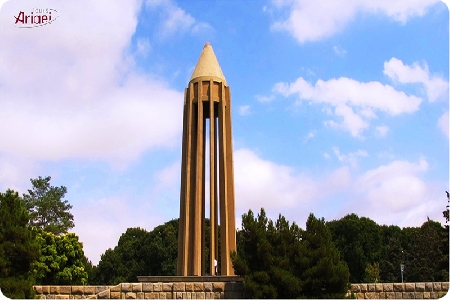A famous Persian philosopher, physicist, and poet, that is known as Avicenna in the west. His book Canon Medicinae was used in medical schools of the 17th century, 600 years after its inscription. He is also famous for his ideas on momentum and inertia and steam distillation. He was born in Uzbekistan, learned medicine in Bukhara and after healing the ruling emir of Hamedan, became the ruler’s advisor. When emir died he was arrested for conspiracy but was freed by the neighboring emir and lived in his court for the rest of his life.
The building that today functions as the mausoleum of Ibn-e Sina was designed and made during the Pahlavi Era and was inaugurated on Ibn-e Sina’s birthday. The building is a combination of Islamic and pre-Islamic architecture. The tower was inspired by Gonbad-e Kavus, that belongs to the same epoch as Ibn-e Sina, the fountains are inspired by traditional houses and the stone façade is a reminder of ancient Persian castles.
